Sometimes you have to leave home and visit someplace else to get a better perspective of your own world. That is just what a few members of Friends of Georgica Pond Foundation (FOGP) did in October when we headed to the Edgartown Great Pond, Martha’s Vineyard, Massachusetts.
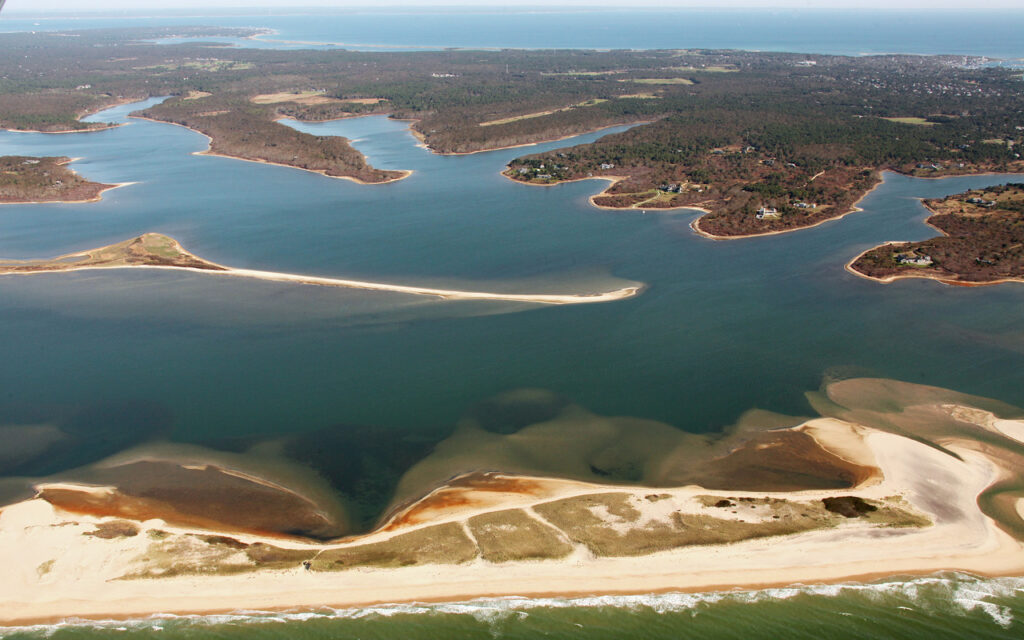
Edgartown Great Pond is a coastal salt pond, three times the size of Georgica Pond that, nevertheless, has many similar characteristics. We wanted to learn how a sister organization, The Great Pond Foundation (GPF) works with the Martha’s Vineyard community to manage this precious resource.
We were very fortunate to spend a day with the Great Pond Foundation’s Executive Director, Emily Reddington, who previously had worked at the Marine Biological Laboratory in Woods Hole. The Foundation has been addressing water quality issues in Great Pond for 25 years, so they have a comprehensive understanding of the Great Pond Watershed and its threats.
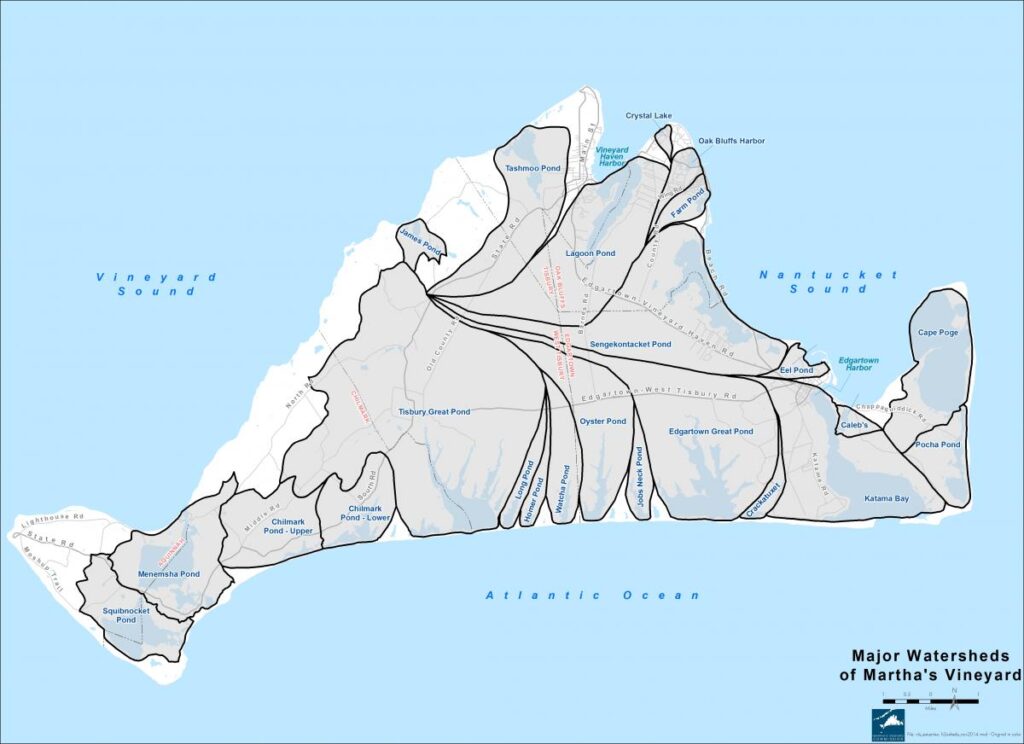
Water Quality Monitoring
The GPF monitors the pond’s water quality and has documented improved water quality over the last 10 years including flourishing eel grass meadows and oyster beds. In the last two years this trajectory changed and macroalgae blooms have returned to the pond.
Pond Openings
Great Pond is opened to the ocean three to four times a year. Multiple openings increase the pond’s salinity, decrease the temperature and refresh the pond. Just like Georgica Pond, this tradition is traced back to indigenous traditions, in the case of Great Pond, the Wampanoag Tribe.
Dredging
Storms and rough surf deposit sand at the mouth of the pond. Over time this builds up and is often referred to as an over-wash delta. Under a permit obtained by the Town of Edgartown, the GPF jump-started the dredging program by purchasing a dredge (Nessie) which has been dredging the over-wash delta annually for the last 10 years. The greatly improved water quality at Great Pond is attributed in part to the dredging program. At Georgica Pond the East Hampton Town Trustees have been dredging the over-wash delta for several decades. The latest permit is in place for 10 years and this winter will be the second consecutive year of sand dredging at Georgica. Improved water quality is expected. Back on Martha’s Vineyard, the Town of Edgartown has assumed responsibility for the dredging program freeing the Great Pond Foundation to fund new initiatives.
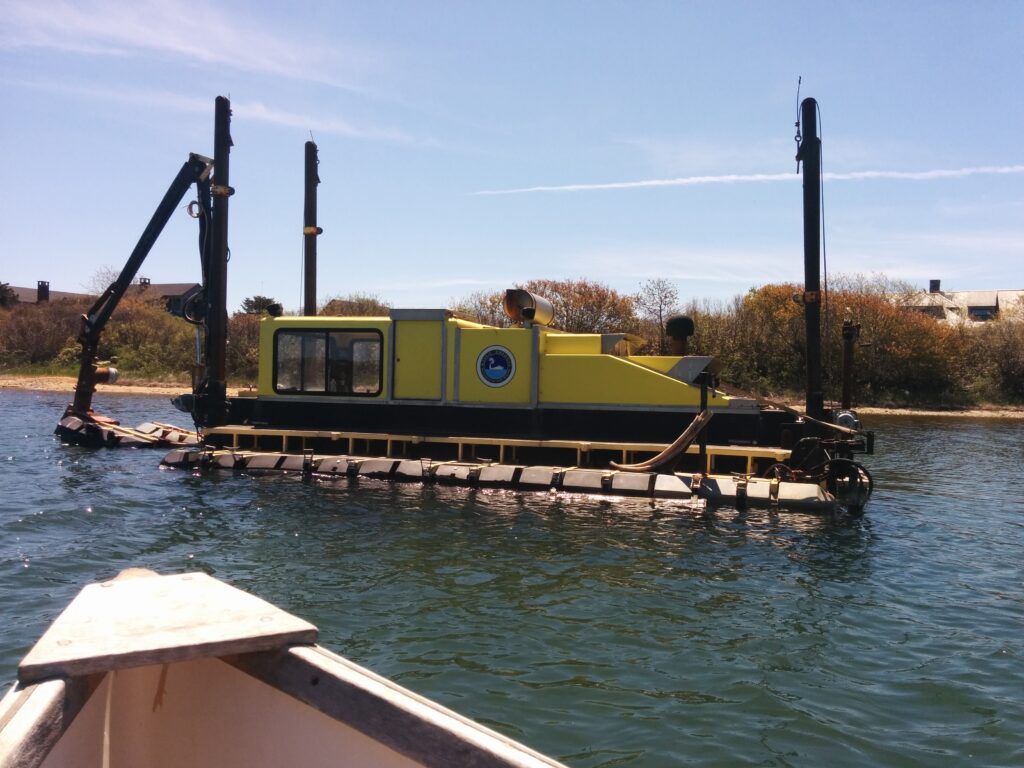
Beach Nesting Shorebirds
The barrier beach at the southern end of Great Pond is home to threatened nesting birds including the least tern and piping plover. Great Pond is also fortunate to have the American oystercatcher. This truly spectacular bird, nests in the same habitat as its threatened cousins. Just like Georgica Pond, all these birds nest directly on the beach and forage in the tidal flats and shallow water of Great Pond. The GPF works with BiodiversityWorks to help protect the nesting areas while the pond is opened during nesting season.
Oysters
The Martha’s Vineyard Shellfish Group has been restoring oysters in Great Pond for more than 10 years. Oysters are contributing to the improved water quality in Great Pond by their remarkable filter feeding and are now harvested commercially. In our next E-Newsletter, you will read about our first year of an experimental introduction of oysters to Georgica Pond.
Harmful Algal Bloom (HAB)
Most of the homes surrounding Great Pond are hooked up to the community sewer system, so nitrogen input from septic waste is much less of a concern than at Georgica Pond, where all the homes are on private, onsite septic systems. The push to upgrade the existing septic systems at Georgica Pond to alternative, low-nitrogen systems is FOGP’s highest priority.
Despite the generally improved water quality, in the last two years Great Pond has experienced harmful algal blooms. Why is this happening? One theory is that in the last two years, the pond’s temperature has exceeded 85◦F during the summer. This temperature is the upper limit for a healthy pond. With high pond temperatures, pond life is stressed.
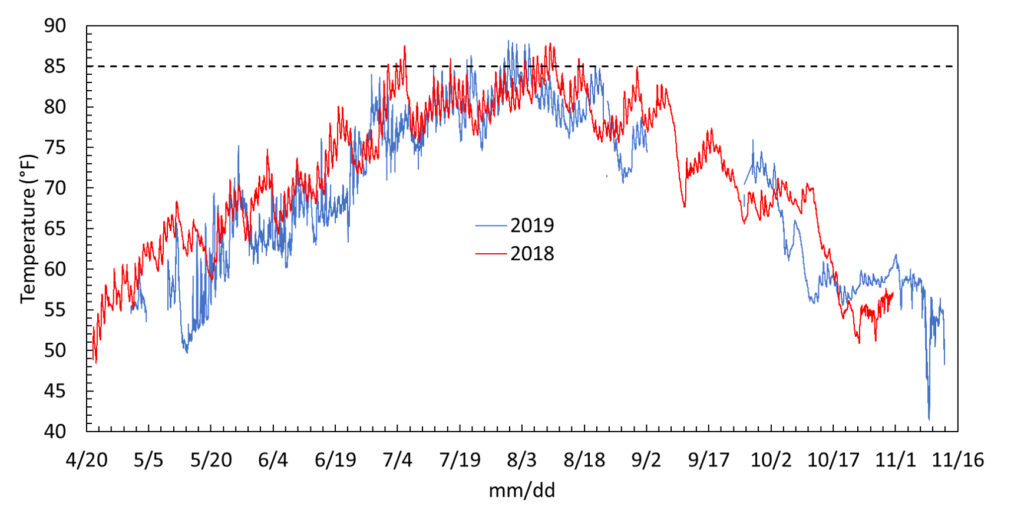
At Georgica Pond, the Gobler Lab telemetry buoy gives us a 24/7 reading of temperature. Data from the last two years shows that pond temperatures occasionally spiked above 85 degrees F.
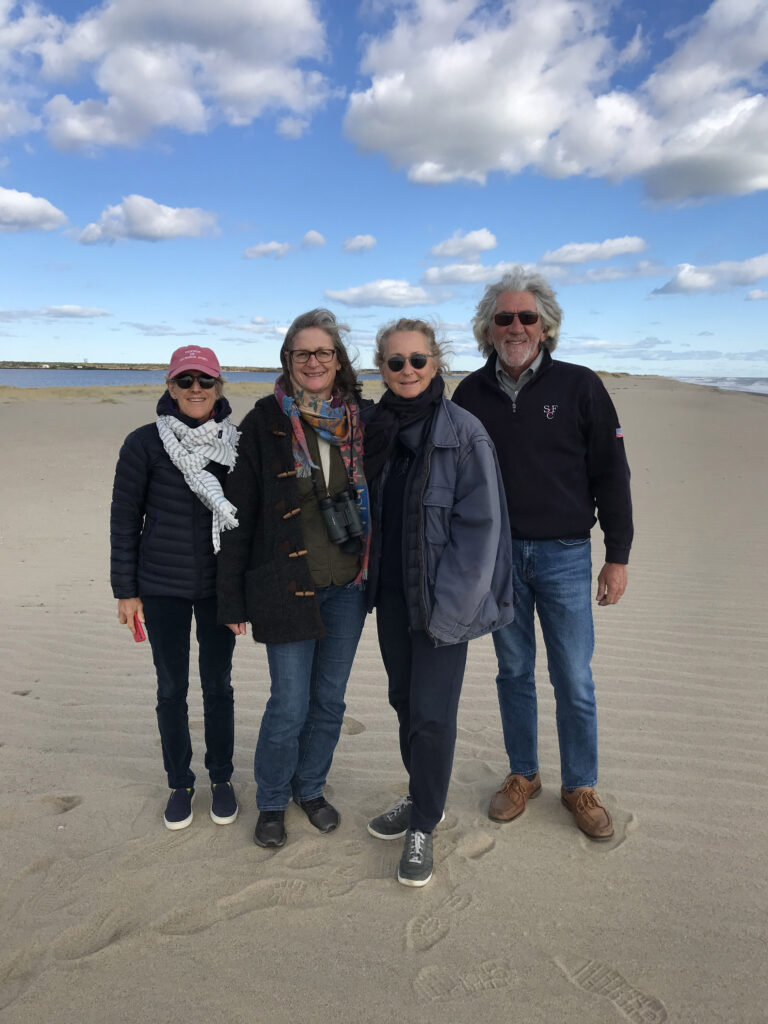
Take Home Messages
- Coastal Ponds from Long Island to New England, are a cherished resource of many user groups. For success, all groups must be included.
- Science must be the basis of all decision making.
- Multiple openings ensure that salinity increases and fish and other organisms such as the blue crab can complete their life cycles which includes stages both in the ocean and pond.
- Annual dredging ensures more successful openings, keeps the pond deeper and cooler and redistributes valuable sand to nearby beaches.
- Exchanges with other groups with similar goals is invaluable, and we look forward to a visit next spring by the Great Pond Foundation.
